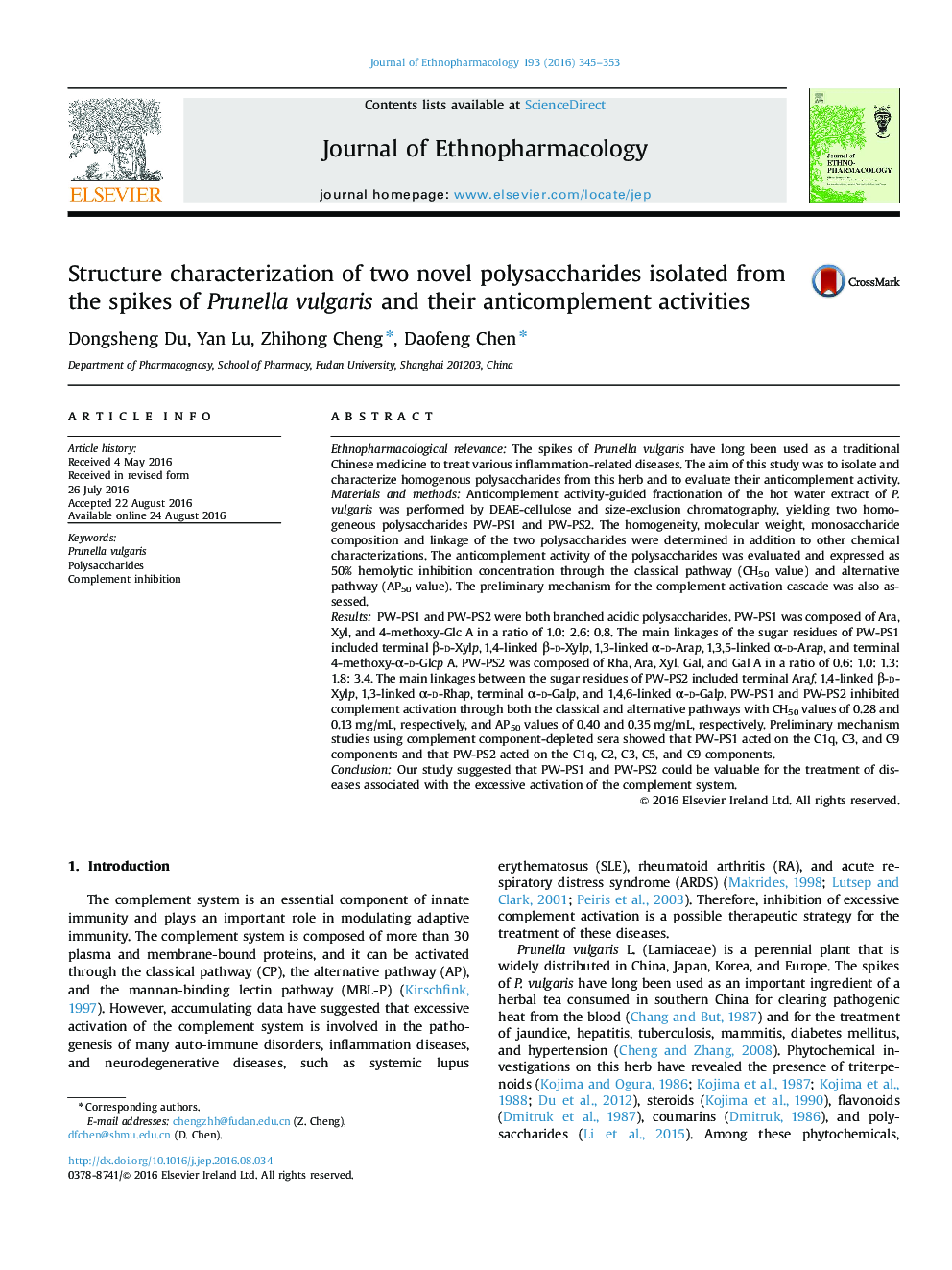| کد مقاله | کد نشریه | سال انتشار | مقاله انگلیسی | نسخه تمام متن |
|---|---|---|---|---|
| 2544643 | 1560369 | 2016 | 9 صفحه PDF | دانلود رایگان |

Ethnopharmacological relevanceThe spikes of Prunella vulgaris have long been used as a traditional Chinese medicine to treat various inflammation-related diseases. The aim of this study was to isolate and characterize homogenous polysaccharides from this herb and to evaluate their anticomplement activity.Materials and methodsAnticomplement activity-guided fractionation of the hot water extract of P. vulgaris was performed by DEAE-cellulose and size-exclusion chromatography, yielding two homogeneous polysaccharides PW-PS1 and PW-PS2. The homogeneity, molecular weight, monosaccharide composition and linkage of the two polysaccharides were determined in addition to other chemical characterizations. The anticomplement activity of the polysaccharides was evaluated and expressed as 50% hemolytic inhibition concentration through the classical pathway (CH50 value) and alternative pathway (AP50 value). The preliminary mechanism for the complement activation cascade was also assessed.ResultsPW-PS1 and PW-PS2 were both branched acidic polysaccharides. PW-PS1 was composed of Ara, Xyl, and 4-methoxy-Glc A in a ratio of 1.0: 2.6: 0.8. The main linkages of the sugar residues of PW-PS1 included terminal β-d-Xylp, 1,4-linked β-d-Xylp, 1,3-linked α-d-Arap, 1,3,5-linked α-d-Arap, and terminal 4-methoxy-α-d-Glcp A. PW-PS2 was composed of Rha, Ara, Xyl, Gal, and Gal A in a ratio of 0.6: 1.0: 1.3: 1.8: 3.4. The main linkages between the sugar residues of PW-PS2 included terminal Araf, 1,4-linked β-d-Xylp, 1,3-linked α-d-Rhap, terminal α-d-Galp, and 1,4,6-linked α-d-Galp. PW-PS1 and PW-PS2 inhibited complement activation through both the classical and alternative pathways with CH50 values of 0.28 and 0.13 mg/mL, respectively, and AP50 values of 0.40 and 0.35 mg/mL, respectively. Preliminary mechanism studies using complement component-depleted sera showed that PW-PS1 acted on the C1q, C3, and C9 components and that PW-PS2 acted on the C1q, C2, C3, C5, and C9 components.ConclusionOur study suggested that PW-PS1 and PW-PS2 could be valuable for the treatment of diseases associated with the excessive activation of the complement system.
Figure optionsDownload high-quality image (270 K)Download as PowerPoint slide
Journal: Journal of Ethnopharmacology - Volume 193, 4 December 2016, Pages 345–353